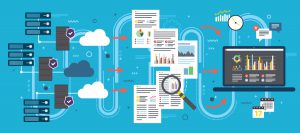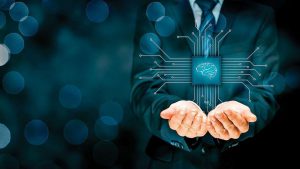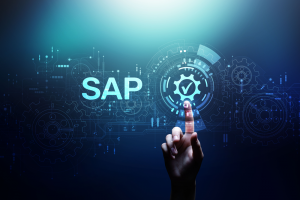In the fast-paced realm of artificial intelligence (AI) and machine learning (ML), one thing is clear: Data Analytics is the unsung hero, quietly powering the transformative capabilities of these technologies. While debates often arise about which comes first, the reality is that Data Analytics and AI/ML have a symbiotic relationship that fuels innovation across various industries. In this article, we will explore the pivotal role of Data Analytics within the world of AI/ML and its interconnectedness, emphasizing the transformative power they jointly possess.
Table of Contents
Understanding the Basics
To embark on this journey, let’s first define our terms. Data Analytics is the process of dissecting raw data to extract meaningful insights. It involves collecting, cleaning, analyzing, and interpreting data to draw actionable conclusions. AI and ML, on the other hand, are subfields of computer science that enable machines to learn and make predictions without explicit programming, driven by their capacity to learn from data.
The Evolution of AI/ML
Initially, AI was synonymous with rule-based programming, where systems adhered to predefined boundaries. However, the advent of ML ushered in a new era, allowing systems to learn autonomously, adapt, and improve. This transition is akin to the difference between traditional video games like Pac Man, Mario, Contra, Duck Hunt and modern games incorporating ML, where the system adapts to players’ actions, making it more challenging and engaging. Such systems are relatively tougher to build and maintain as this involves processing copious amounts of data. But with modern cloud computing these have become relatively easier.
The Connection between Data Analytics and AI/ML
So, how are these fields interconnected? Data Analytics plays an integral role in AI/ML by enabling the training, evaluation, and deployment of AI models. Here are some concrete examples:
1. Training AI Models: Data Analytics feeds AI models with extensive data, which is then analyzed to identify patterns and relationships used for predictions.
2. Evaluating AI Models: After training, Data Analytics assesses the model’s performance, pinpointing areas for improvement.
3. Identifying Data Patterns: Data Analytics uncovers hidden data patterns, invaluable for both AI model training and informed decision-making.
4. Deployment in Production: Data Analytics ensures AI models operate effectively in real-world scenarios by monitoring their performance.
Beyond these, Data Analytics serves in data preparation, visualization, security, privacy management, and results communication—supporting the entire AI/ML pipeline.
Key Trends Driving the Need for AI/ML in Data Analytics
Several trends highlight the growing demand for AI/ML in Data Analytics:
1. Data Volume and Velocity: Businesses generate copious data at an ever-increasing pace, necessitating AI/ML for sense-making.
2. Real-time Insights: Timely decision-making requires real-time insights, a realm where AI/ML excels.
3. Automation: AI/ML automates data analysis tasks, allowing analysts to focus on strategic endeavors.
The Symbiotic Future of Data Analytics and AI/ML
In the evolving tech landscape, the symbiotic relationship between Data Analytics and AI/ML is becoming central to innovation. This partnership hinges on the following crucial aspects:
![]() The Data-Driven Foundation: AI/ML relies on data, and Data Analytics translates raw data into structured, usable information. It ensures data quality and integrity, forming the foundation for AI/ML models.
The Data-Driven Foundation: AI/ML relies on data, and Data Analytics translates raw data into structured, usable information. It ensures data quality and integrity, forming the foundation for AI/ML models.
![]() Insight Generation and Model Training: Data Analytics uncovers insights shaping AI/ML model development. It also plays a critical role in iterative model training, ensuring models adapt to dynamic environments.
Insight Generation and Model Training: Data Analytics uncovers insights shaping AI/ML model development. It also plays a critical role in iterative model training, ensuring models adapt to dynamic environments.
![]() Enhancing Predictive Accuracy: Data Analytics enriches AI/ML by providing context and relevant data. For instance, in healthcare, comprehensive patient profiles improve outcome predictions.
Enhancing Predictive Accuracy: Data Analytics enriches AI/ML by providing context and relevant data. For instance, in healthcare, comprehensive patient profiles improve outcome predictions.
![]() Ethics, Bias, and Fairness: Data Analytics identifies and mitigates biases in AI/ML models, ensuring ethical and fair decision-making.
Ethics, Bias, and Fairness: Data Analytics identifies and mitigates biases in AI/ML models, ensuring ethical and fair decision-making.
![]() Data Efficiency and Model Optimization: Data Analytics optimizes data usage, reducing computational and storage demands.
Data Efficiency and Model Optimization: Data Analytics optimizes data usage, reducing computational and storage demands.
Looking Ahead
As AI/ML and Data Analytics continue to evolve, their partnership will solidify further. AI/ML’s expanding applications demand sophisticated Data Analytics techniques to manage vast datasets. Moreover, the evolution of AI/ML into more autonomous systems necessitates real-time data analysis for timely decision-making.
In conclusion, Data Analytics and AI/ML are symbiotic, each amplifying the capabilities of the other. Data Analytics serves as the compass guiding AI/ML model development, ensuring data quality, addressing biases, and enhancing efficiency. In the data-driven world of innovation, a strong foundation in Data Analytics remains integral to success.
About the Author:

Hariharan Ramakrishnan leads the Digital and Analytics services at Motherson Technology Services. A multi-disciplinary business leader with 20 plus years of experience in the digital transformation space, he is instrumental in helping enterprises evolve their digital strategy to enhance their revenues whilst improving customer experience, and optimising cost. A frequent speaker at industry & technology forums, he continues to author various thought leading articles on technology related trends.

 September 27, 2023
September 27, 2023 Hariharan Ramakrishnan
Hariharan Ramakrishnan














































